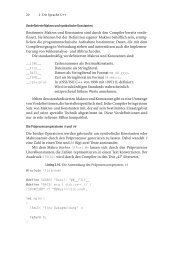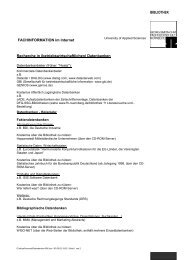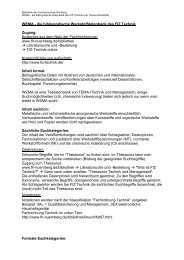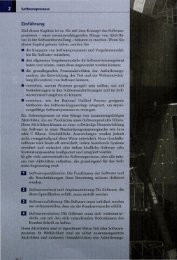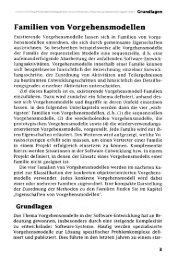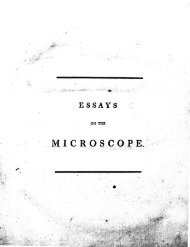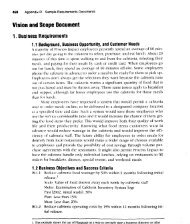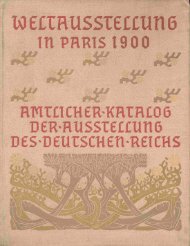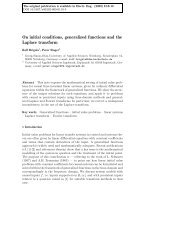Establishing the Product Vision and Project Scope
Establishing the Product Vision and Project Scope
Establishing the Product Vision and Project Scope
You also want an ePaper? Increase the reach of your titles
YUMPU automatically turns print PDFs into web optimized ePapers that Google loves.
90 Part II Software Requirements Development<br />
considerable design <strong>and</strong> implementation effort. Ask <strong>the</strong> Stakeholders questions<br />
such as <strong>the</strong> following:<br />
• Are <strong>the</strong> users widely distributed geographically or located close to<br />
each o<strong>the</strong>r? How many time zones are <strong>the</strong>y in?<br />
• When do <strong>the</strong> users in various locations need to access <strong>the</strong> system?<br />
• Where is <strong>the</strong> data generated <strong>and</strong> used? How far apart are <strong>the</strong>se<br />
locations? Does data from multiple locations need to be combined?<br />
• Are specific maximum response times known for accessing data that<br />
might be stored remotely?<br />
• Can <strong>the</strong> userstolerate service interruptions or is continuous access to<br />
<strong>the</strong> system critical for <strong>the</strong> operation of <strong>the</strong>ir businesses?<br />
• What access security controls <strong>and</strong> data protection requirements are<br />
needed?<br />
The Context Diagram<br />
The scope description establishes <strong>the</strong> boundary <strong>and</strong> connections between <strong>the</strong><br />
system we are developing <strong>and</strong> everything else in <strong>the</strong> universe. The context<br />
diagram graphically illustrates this boundary. It identifies terminators outside<br />
<strong>the</strong> system that interface to it in some way, as well as data, control, <strong>and</strong> material<br />
jlows between <strong>the</strong> terminators <strong>and</strong> <strong>the</strong> system. The context diagram is <strong>the</strong> top<br />
level of abstraction in a data flow diagram developed according to <strong>the</strong> principles<br />
of structured analysis (Robertson <strong>and</strong> Robertson 1994), but it's a useful<br />
model for projects that follow any development methodology. You can include<br />
<strong>the</strong> context diagram in <strong>the</strong> vision <strong>and</strong> scope document, in or as an appendix to<br />
<strong>the</strong> SRS, or as part of a data flow model for <strong>the</strong> system.<br />
Figure S-3 illustrates a portion of <strong>the</strong> context diagram for <strong>the</strong> Chemical<br />
Tracking System. The entire system is depicted as a single circle; <strong>the</strong> context<br />
diagram deliberately provides no visibility into <strong>the</strong> system's internal objects,<br />
processes, <strong>and</strong> data. The "system" inside <strong>the</strong> circle could encompass any combination<br />
of software, hardware, <strong>and</strong> human components. The terminators in <strong>the</strong><br />
rectangles can represent user classes ("Chemist" or "Buyer"), organizations<br />
("Health <strong>and</strong> Safety Department"), o<strong>the</strong>r systems ("Training Database"), or hardware<br />
devices ("Bar Code Reader"). The arrows on <strong>the</strong> diagram represent <strong>the</strong><br />
flow of data ("request for chemical") or physical items ("chemical container")<br />
between <strong>the</strong> system <strong>and</strong> <strong>the</strong> terminators.



